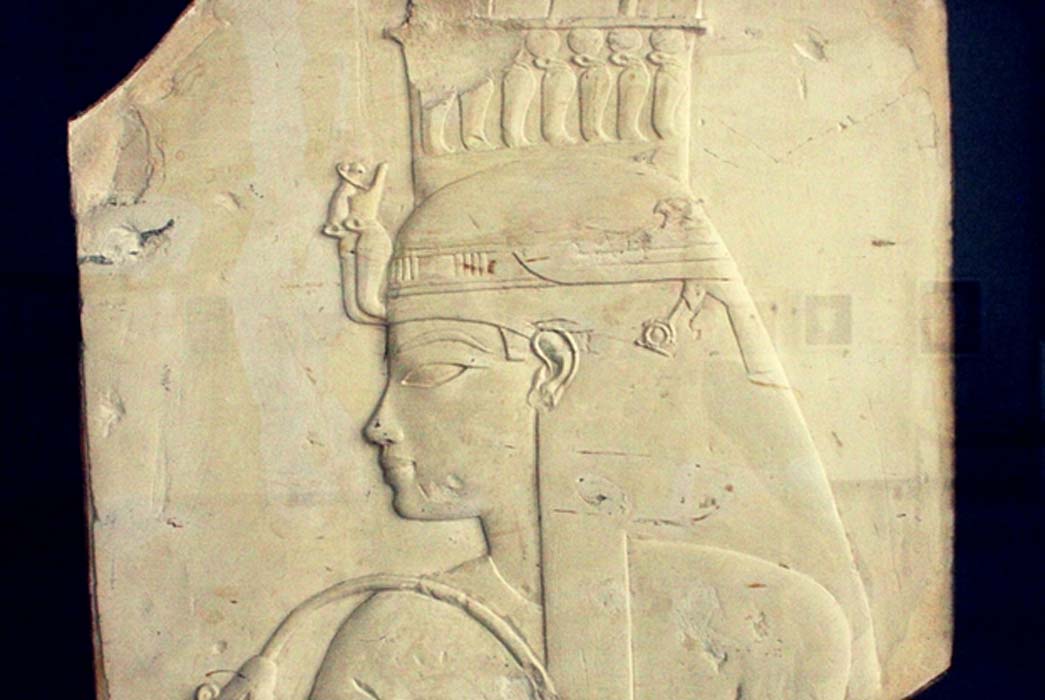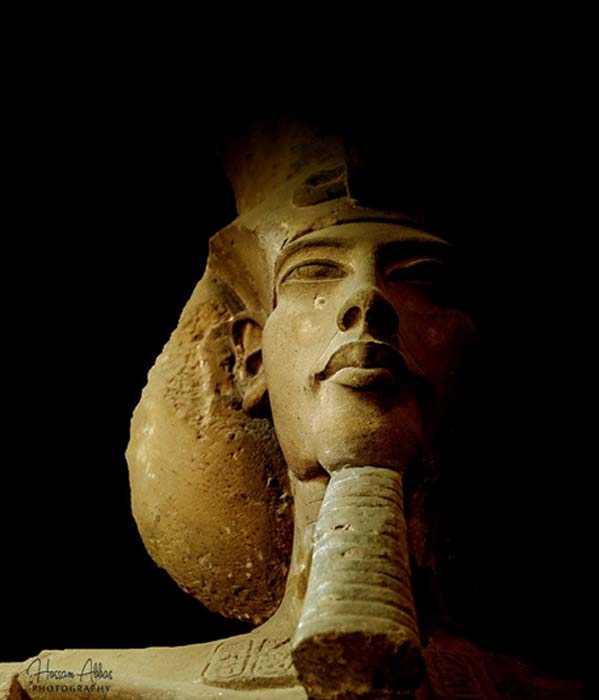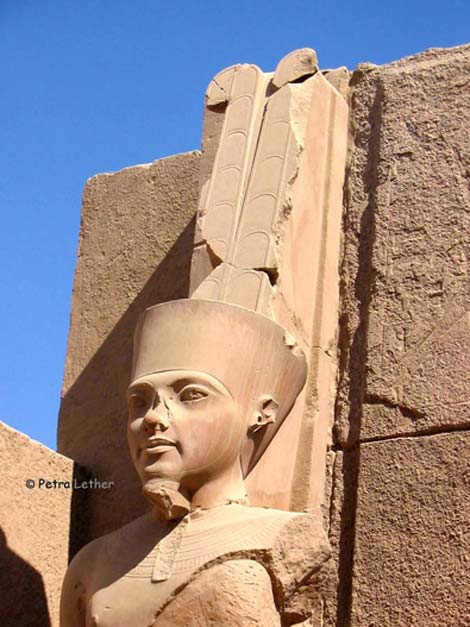
The Golden Shrine of Queen Tiye: When and How Did It Reach the Theban Necropolis? -Part I
- By anand balaji
- 0
Among the hundreds of ancient rock-cut royal sepulchers that have been discovered in Egypt one in particular, KV55, stands out for its infinite intrigue. At some point in time, this Eighteenth Dynasty crypt was used to deposit at least two mummies – Pharaoh Neferkheperure-waenre Akhenaten netjerheqawaset and his mother, the dowager Queen Tiye. While scholars continue to debate the identity of the former, the fact that the Great Royal Wife rested for a while in this tomb was proved by the presence of her enormous golden shrines found within. A hurried archeological dig, that displayed poor regard for cataloguing and conserving the objects recovered, has raised more questions today than it has provided answers.

This colossal sandstone sculpture of Pharaoh Akhenaten, wearing the Khat headdress and double crown, was discovered at Karnak Temple. The king’s desire to rest for all eternity in the city he had built, Akhetaten, was dashed when Tutankhamun ascended the throne and shifted the capital back to Thebes. Egyptian Museum, Cairo.
Dead Bid Adieu to Amarna
With Akhenaten died his grandiose religious revolution; and his successor, Tutankhaten ensured that the Aten, though not denounced, was ousted as the supreme god. In Regnal Year 3 the young king changed his nomen to Tutankhamun (Nebkheperure Tutankhamun Hekaiunushema) and reinstated the traditional state deity Amun. The next step was to shift the royal capital back to Thebes, that his father had abandoned as the seat of power when he had Akhetaten built. But by the time Tutankhamun ascended the throne most members of his family had died. The mortal remains of at least three of them were interred in the massive communal royal tomb (TA26) constructed in a remote wadi of the eastern desert cliffs at Amarna.

Colossal statue of Amun at Karnak Temple, carved in the likeness of Pharaoh Tutankhamun. As with almost all of the boy-king’s monuments, Horemheb, the erstwhile generalissimo and last ruler of the Eighteenth Dynasty - who had served under the young king - usurped this sculpture too.
With the shift to Thebes confirmed, the problem of providing security to the deceased in this remote location in Middle Egypt surfaced. There was only one solution—move the mummies of the Heretic and his immediate family back to the pharaonic necropolis, known to us as the Valley of the Kings. This must have been an unthinkable act, for, on a series of boundary stelae defining the sacred territory of his new city, Akhenaten decreed that a tomb should be made for him in the eastern mountains, and that his Great Royal Wife Nefertiti, and his daughter Meritaten, should also be buried there:

Amarna Boundary Stela ‘A’ at Tuna el Gebel. The text on such stele proclaimed Akhenaten’s intention that he, Nefertiti, and Meritaten be buried in the eastern hills at Akhetaten (Amarna).
‘Let a tomb be made for me in the eastern mountain of Akhetaten. Let my burial be made in it, in the millions of jubilees which the Aten, my father, has decreed for me. Let the burial of the Great King's Wife, Nefertiti, be made in it, in the millions of yea[rs which the Aten, my father, decreed for her. Let the burial of] the King's Daughter, Meritaten, [be made] in it, in these millions of years. If I die in any town downstream, to the south, to the west, to the east in these millions of years, let me be brought back, that I may be buried in Akhetaten. If the Great King's Wife, Nefertiti, dies in any town downstream, to the south, to the west, to the east in these millions of years, let her be brought back, that she may be buried in Akhetaten. If the King's Daughter, Meritaten, dies in any town downstream, to the south, to the west, to the east in the millions of years, let her be brought back, that she may be buried in Akhetaten. Let a cemetery for the Mnevis Bull [be made] in the eastern mountain of Akhetaten, that he may be buried in it. Let the tombs of the Chief of Seers, of the God's Fathers of the [Aten.......] be made in the eastern mountain of Akhetaten, that they may be buried in it. Let [the tombs] of the priests of the [Aten] be [made in the eastern mountain of Akhetaten] that they may b[e bur]ied in it’.





